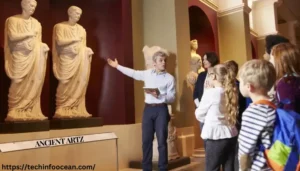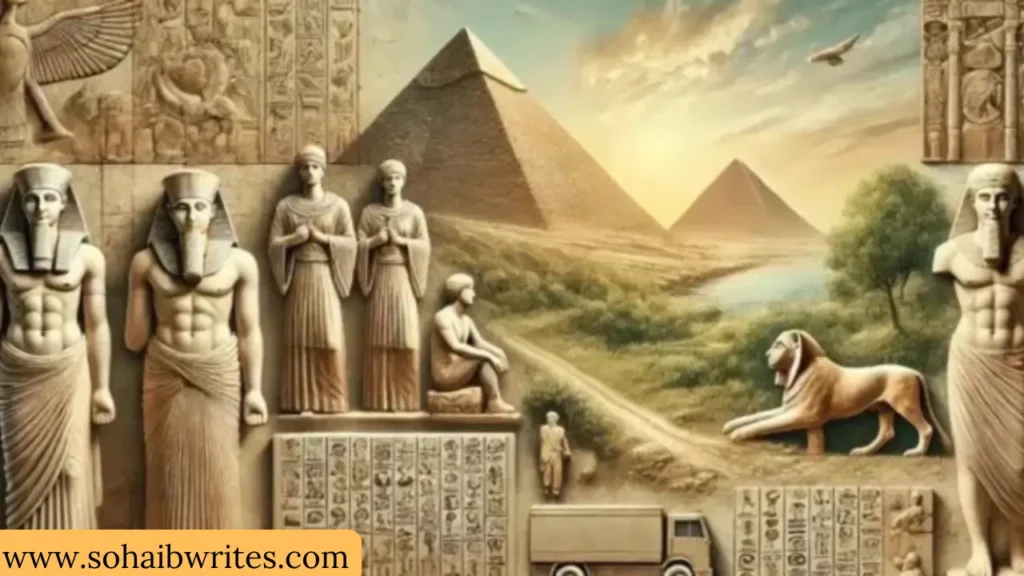Ancient Artz introduction
The ideas, values, and everyday routines of societies that flourished thousands of years ago are revealed via the powerful lens of ancient art, which allows us to investigate the intricacies of human civilization. Information of ancient artz takes many different forms and serves many different purposes. Examples include the magnificent sculptures and architectural marvels of ancient Greece and Rome that represent ideals of beauty, democracy, and power, as well as the captivating cave paintings of Lascaux that depict the spiritual connection of prehistoric humans to their environment. Whether it’s the exquisite Minoan pottery, which displays sophisticated artistry and trade, or the magnificent totem poles of indigenous civilizations, which communicate profound spiritual meanings and ancestor links, every piece tells a narrative. This article is about information of ancient artz.
In addition to being ornamental pieces, these works of art frequently functioned as platforms for political propaganda, ritualistic activities, and identity assertion. In addition, information of ancient artz shows how societies adjusted to their environment and dealt with shifting social dynamics, reflecting the changing relationship between humans and nature. These artifacts provide priceless insights into the human condition as we study them now. They connect the past and present and encourage us to reflect on the timeless themes of existence, creativity, and community. By serving as a constant reminder of our shared history and the various routes humanity has taken throughout time, information of ancient artz helps us to better understand our common ancestry.
Religion’s Influence on Ancient Artz
By use of faith, Information of ancient artz was developed in excellent components. Frequently interwoven with the governmental and spiritual structures of their era, a great deal of art from the ancient world features gods, goddesses, and legendary scenarios. The Great Pyramid of Giza and other large temples and tombs were built in ancient Egypt as a result of the belief in an afterlife. The Egyptian funeral design combined art and religion to provide a smooth transition for the deceased into the afterlife.
Ancient Greek art was greatly influenced by religion, even if it altered supplies in a different way. Greek temples, like the Parthenon, were adorned with elaborate sculptures and friezes depicting the gods in human form, emphasizing their close courtship with mankind. The beautiful non-secular idea of the day is considered in light of the artwork’s combination of supernatural and human elements. Greek sculptors were particularly skilled at depicting gods and heroes with striking realism and emotion, as well as creating avant-garde artwork.
Technical Artz and Ancient Artz

Both Ancient Art and Technical Art are unique approaches to artistic production that capture the ideals, methods, and cultural settings of their respective eras.
Ancient Artz
The artistic creations of prehistoric societies, such as those of Mesopotamia, Egypt, Greece, Rome, and indigenous cultures, are collectively referred to as ancient art. This type of art is distinguished by its references to mythology, spirituality, and social institutions. Techniques ranged greatly, encompassing metalworking, pottery, and fresco painting in addition to stone cutting. Ancient painters frequently created works for religious, ceremonial, or political objectives while adhering to established styles and customs. The art was firmly ingrained in daily life and frequently served to communicate cultural ideals and a collective identity. The famous Greek sculptures, the elaborate reliefs seen in Egyptian temples, and the vivid paintings of Mesoamerican cultures are a few notable examples.
Technical Artz
The utilization of cutting-edge methods, supplies, and technology in the creative process is emphasized in technical art, which is frequently connected to modern and contemporary practices. This genre encompasses a broad spectrum of techniques, including digital art, 3D modeling, mixed-media installations, and traditional drawing and painting. Artists working in this field frequently push the limits of what is possible in art by experimenting with form and function. Diverse interpretations of themes and concepts are made possible by the emphasis on creativity and individual expression, which frequently reflects the complexity of modern society. Technical art allows viewers to interact dynamically with the art through interactive installations, virtual reality experiences, and art made using new and emerging technologies.
Connections and Contrasts
Technical art encourages creativity and individual expression, whereas information of ancient artz frequently has its roots in tradition and a shared identity. But both types of art deal with the human condition, posing issues related to existence, culture, and the place of creativity in society. We can learn more about how artistic practices have changed over time to reflect shifts in philosophy, technology, and societal values by examining their contrasts and similarities.
For more information, please visit our homepage.



